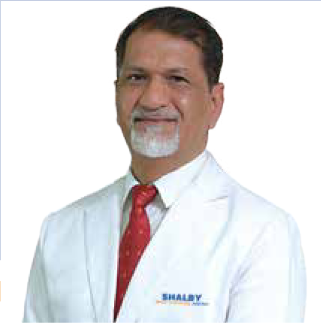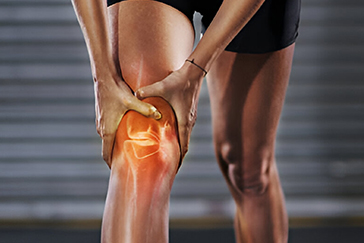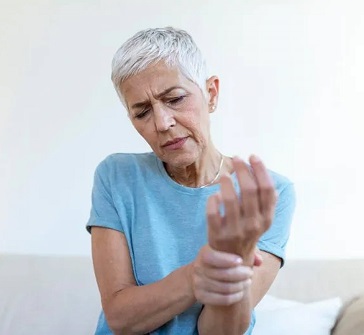 Book Appt.
Book Appt.
 Call Now
Call Now


Arthritis, a term derived from the Greek words "arthron" (joint) and "itis" (inflammation), refers to a group of disorders characterized by inflammation in the joints. It is a widespread and complex family of diseases that affect people of all ages, backgrounds, and walks of life. This umbrella term encompasses over a hundred different conditions, each with its own unique characteristics and challenges. From the more common forms like osteoarthritis to autoimmune conditions like rheumatoid arthritis, understanding the diverse landscape of arthritis diseases is crucial in tailoring effective treatments and support for those affected.
Osteoarthritis (OA), often referred to as the "wear-and-tear" arthritis, is the most prevalent form of arthritis. It primarily affects the elderly, but can also arise from joint injuries or excessive stress on the joints. In OA, the protective cartilage that cushions the ends of bones wears down over time, leading to pain, stiffness, and reduced mobility. This form of arthritis commonly affects weight-bearing joints such as the hips, knees, and spine. While it may start with mild discomfort, the condition can progress, significantly impacting a person's quality of life.
Rheumatoid arthritis (RA) is an autoimmune disorder where the body's immune system mistakenly attacks its own tissues, particularly the lining of joints. This leads to chronic inflammation, swelling, and pain. Unlike OA, which typically affects specific joints, RA can be systemic, potentially impacting organs and tissues throughout the body. It is a chronic, progressive condition that requires ongoing management to prevent further joint damage and preserve mobility.
Juvenile idiopathic arthritis (JIA), as the name suggests, affects children and adolescents. This form of arthritis is not a single disease, but rather a group of conditions characterized by joint inflammation lasting for at least six weeks in a child under 16 years of age. The symptoms can range from mild joint pain to severe inflammation that affects growth and development. Early diagnosis and treatment are crucial in managing JIA and preventing long-term complications.
Psoriatic arthritis (PsA) is a type of arthritis that often accompanies the skin condition psoriasis. It can affect joints, causing pain, stiffness, and swelling, but it can also lead to nail changes and eye inflammation. PsA varies widely in its presentation, affecting individuals differently. Some may experience mild joint discomfort, while others may face more severe symptoms, including joint deformities.
Ankylosing spondylitis (AS) is a form of arthritis that primarily affects the spine, causing inflammation and pain. Over time, the vertebrae may fuse together, leading to a loss of mobility in the spine. AS can also affect other joints and may cause fatigue and eye inflammation. It is more common in young men, and early diagnosis is crucial in managing the condition and preserving mobility.
Systemic lupus erythematosus (SLE) is an autoimmune disease that can affect various organs and tissues, including joints. While not exclusively classified as an arthritis disease, joint pain and inflammation are common symptoms. SLE is characterized by periods of flare-ups and remission, and its impact can range from mild to severe. Managing SLE requires a comprehensive approach, often involving medications and lifestyle modifications.
Gout is a type of arthritis caused by the buildup of uric acid crystals in the joints. It often affects the big toe, causing sudden and severe pain, swelling, and redness. Gout attacks can be triggered by factors like diet, alcohol consumption, and certain medications. With proper management, including lifestyle changes and medications, individuals with gout can prevent future attacks and reduce joint damage.
In conclusion, the spectrum of arthritis diseases is vast and diverse, encompassing conditions with varied causes, symptoms, and treatments. Understanding these distinct forms of arthritis is essential in providing tailored care and support for those affected. By recognizing the unique challenges posed by each type of arthritis, healthcare professionals and individuals alike can work together to manage symptoms, preserve mobility, and improve quality of life for those living with these conditions.
SHALBY Sanar International Hospitals provides extensive medical procedures backed up with our state-of-the-art technology and a team of highly qualified & experienced clinical experts.



Life Transformed: Mr. Blojah Felix Journey to Pain-Free Living | SHALBY Sanar

Pain-Free Living After 6 Years: Knee Replacement Success Story | Dr. Rohit Lamba

Bilateral Total Knee Replacement by Dr. Vikram Shah | SHALBY Sanar International Hospitals

Remarkable Recovery Story: Hip Replacement for Non-union Fracture

Incredible Recovery Story: Bilateral Knee Replacement Transformation

Knee Replacement Surgery by Dr. Rohit Lamba: 60-Year-Old's Remarkable Recovery

Renewed Hope: Successful Hip Replacement Surgery Transforms Iraqi Patient's Life

Exploring a Case of Revision Knee Replacement: Insights from Dr. Rohit Lamba

Triumphant Journey: Ms. Fatima, 69, Triumphs Over Revision Knee Replacement Surgery

Leaving the crutches behind – Riyaz, 43, gains confidence after a successful Hip Replacement Surgery

Transformative Total Knee Replacement Surgery: A New Lease on Life for 48-Year-Old Ramesh

Miraculous Recovery: 17-Year-Old Kenyan Overcomes Osteosarcoma with Mega Prosthesis Surgery

Mr. Omar Faruk's Remarkable Knee Recovery: ACL Reconstruction Success Story

Mrs. Vijay Luxmi's Remarkable Knee Replacement Journey

Umidjon, 36, from Uzbekistan shares his gratitude for a successful total hip replacement surgery

Ms. Mohsin from Iraq shares her gratitude for a successful Computer Navigated Total Knee Replacement

A Total Hip Replacement surgery gives Ms. Barry from Ghana, the ability to walk again.

Dr. Rohit Lamba talks about a successful Hip Replacement Surgery carried out on an Iraqi patient
Our doctors pen down their research findings and experiences from time to time. Their words provide deep insight into the latest techniques, technologies and other advancements in healthcare. It provides expert answers to all kinds of health questions for real-life issues.
VIEW ALL.png)
.png)



Since the day of its foundation, SHALBY Sanar International Hospitals is committed to provide comprehensive healthcare services. It regularly organizes awareness programs in its premises and encourages outdoor healthcare activities and camps with an intent to put focus on preventive healthcare.
VIEW ALL